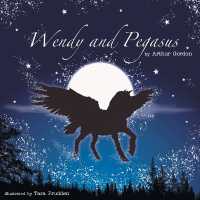- ホーム
- > 洋書
- > 英文書
- > Nature / Ecology
基本説明
Includes Cestodes (tapeworms) and Trematodes (flukes, schistosomes etc), which are the cause of a number of diseases of medical and veterinary imporatnce. The book explores three main areas: phylogeny, genetics and transcriptomes; immunobiology, host-parasite interaction and control; and protein function, metabolism and physiology.
Full Description
Parasitic flatworms include Cestodes (tapeworms) and trematodes (flukes, schistosomes, etc) and are the cause of a number of major diseases of medical and veterinary significance. Much recent research has focused on molecular biology and genomics. this book aims to review advances in our understanding of these and related topics such as flatworm biochemistry, immunology and physiology. Where appropriate, comparisons are made between different parasitic flatworms and between parasitic and free-living species. Contributors to the book include leading authorities from Europe, North and South America, and Australia.
Contents
Part I: Phylogeny, Genetics and Transcriptomes 1: The Evolution of Parasitism in Flatworms, D T J Littlewood, Natural History Museum, UK 2: Genomes and Genomics of Parasitic Flatworms, D A Johnston, Natural History Museum, UK 3: Genetic Discrimination of Echinococcus Species and Strains, D P McManus, University of Queensland, Australia 4: Ribosomal DNA Variation in Parasitic Flatworms, D Blair, James Cook University, Australia 5: Genetic Studies on Monogeneas with Emphasis on Gyrodactylus, ,CO Cunningham and I Matějusová, FRS MarineLaboratory, Aberdeen, UK 6: The Schistosome Transcriptome, S Verjovski-Almeida and R DeMarco, Universidade de Sao Paulo, Brazil 7: Transgenic Flatworms, C G Grevelding, Justus-Liebig-University Giessen, Germany Part II: Immunobiology, Host-Parasite Interaction and Control 8: Immunobiology of Schistosomes, S G Forrester, University of Ontario, Canada and E J Pearce, University of Pennsylvania, USA 9: Cestode Infection: Immunological Considerations From Host and Tapeworm Perspectives, D M McKay, McMaster University, and R A Webb, York University, Canada 10: Parasitic Flatworms: Signal Transduction at the Host-Parasite Interface, T P Yoshino, J J Vermeire and J Humphries, University of Wisconsin-Madison, USA 11: Parasite Effects on the Snail Host Transcriptome, M Knight and N Raghavan, Biomedical Research Institute, USA 12: Developments in the chemotherapy of parasitic flatworms, G C Coles, University of Bristol, UK 13: Drug Resistance in Schistosomes, T A Day, Iowa State University, USA and S Botros, Theodor Bilharz Research Institute, Egypt 14: Praziquantel: Mechanism of Action, R M Greenberg, Marine Biological Laboratory, Woods Hole, MA, USA 15: Cestode Vaccine Development, M W Lightowlers, University of Melbourne, Australia 16: The Development of a Schistosome Vaccine, R A Wilson and P S Coulson, University of York, UK Part III: Protein Function, Metabolism and Physiology 17: Flatworm Parasite Proteomics, R M Morphew, J Barrett and P M Brophy, University of Wales, UK 18: Proteases in Trematode Biology, J P Dalton, C R Caffrey, M Sajid, C Stack, S Donnelly, A Loukas, T Don, J McKerrow, D W Halton & P J Brindley. 19: Signalling Molecules and Nerve-Muscle Function, A G Maule, N J Marks and T A Day 20: Unusual Aspects of Metabolism in Flatworm Parasites, A G M Tielens and J J van Hellemond, Utrecht University, Netherlands 21: Glycoconjugate Structures, M Wuhrer, Leiden University Medical Center, Netherlands and R Geyer, University of Giessen, Germany 22: Gene Silencing in Flatworms using RNA interference, P J Skelly, TuftsUniversity School of Veterinary Medicine, USA"








